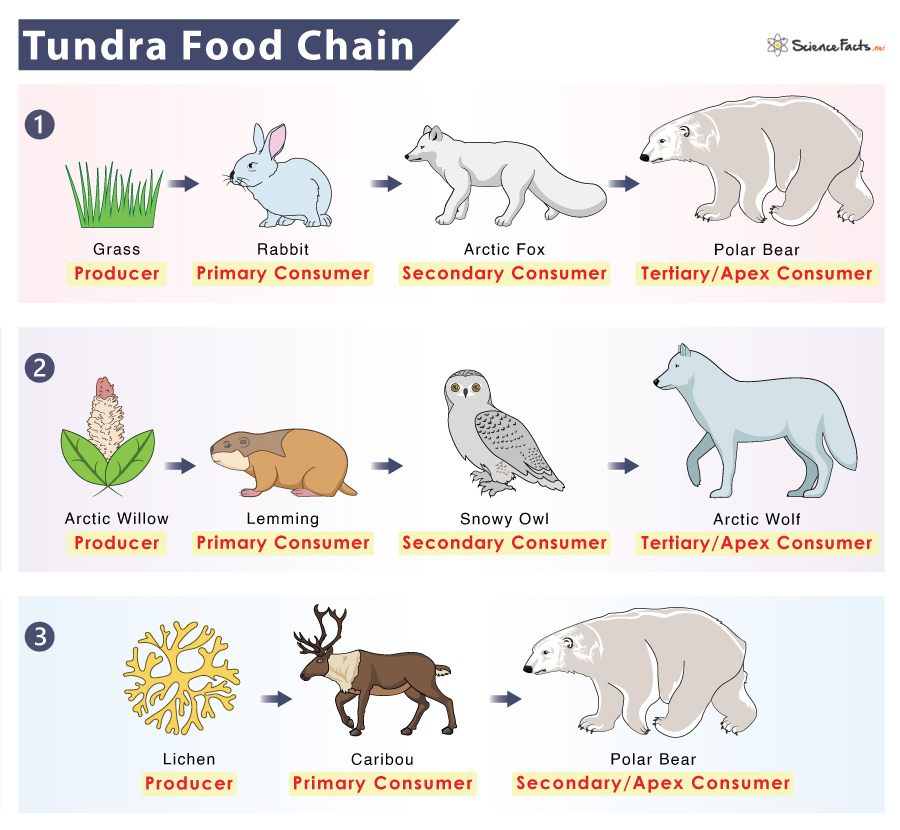Topic how is forest management important to a healthy forest ecosystem: Discover the pivotal role of forest management in nurturing a healthy forest ecosystem, ensuring biodiversity, climate resilience, and sustainable resources for future generations.
Table of Content
- How does forest management contribute to the overall health of a forest ecosystem?
- Understanding Sustainable Forest Management (SFM)
- The Role of Biodiversity Conservation in Forest Management
- Economic and Social Benefits of Sustainable Forestry
- Impact of Forests on Human Health and Global Ecosystems
- Indigenous-led Stewardship and Traditional Knowledge
- Combating Deforestation: Strategies and Challenges
- YOUTUBE: Importance of Wildlife Management for Healthy Forest Maintenance | Georgia Forests
- Forests as a Source of Medicinal Resources
- Urban Forestry: Benefits Beyond the Wild
- Enhancing Forest Resilience: The Fight Against Pests and Pathogens
- Community Involvement and Education in Forest Management
How does forest management contribute to the overall health of a forest ecosystem?
Forest management plays a crucial role in maintaining the overall health of a forest ecosystem. Here are the steps in which forest management contributes to the health of the forest:
- Vegetation management: Forest management involves managing the vegetation within the forest. This includes removing invasive species, thinning overcrowded areas, and promoting the growth of native plant species that are essential for a healthy ecosystem.
- Ecosystem restoration: Forest management focuses on restoring ecosystem processes and functions within the forest. This involves restoring natural disturbances like fire, maintaining water quality and availability, and enhancing habitat conditions for wildlife.
- Hazard reduction: Forest management practices help reduce the risk of hazards such as wildfires, insect infestations, and disease outbreaks. These hazards can negatively impact the health of the forest by causing widespread damage and reducing biodiversity.
- Forest health: Forest management aims to maintain the overall health of the forest by monitoring and addressing stressors such as pollution, climate change, and the spread of pests. Regular assessment of the forest\'s health allows for timely intervention and appropriate management strategies.
By following these steps in forest management, the overall health and resilience of the forest ecosystem can be improved. This leads to the preservation of biodiversity, provision of clean water and air, and the sustainable use of forest resources.
READ MORE:
Understanding Sustainable Forest Management (SFM)
Sustainable Forest Management (SFM) is a holistic approach that aims to maintain and enhance the economic, social, and environmental values of all types of forests for the benefit of present and future generations. SFM involves the careful management of forest resources to ensure they meet our current needs without compromising the health of the ecosystems or the ability of future generations to meet their own needs.
- Environmental Conservation: SFM practices help in preserving vital ecosystems, protecting biodiversity, and mitigating the effects of climate change by managing forest carbon stocks.
- Economic Sustainability: It supports the forest"s contribution to the economy by enabling sustainable production of forest goods and services, including timber, non-timber products, and ecosystem services like water regulation and carbon sequestration.
- Social Equity: SFM ensures that the benefits derived from forest resources are shared equitably among stakeholders, including indigenous peoples and local communities, while respecting their rights and knowledge.
- Adaptive Management: This approach involves monitoring forest health and productivity, adjusting management practices based on scientific research and changing environmental conditions to ensure resilience against pests, diseases, and climate variability.
- Legal and Policy Frameworks: Effective SFM is supported by strong legal and policy frameworks that promote sustainable forest use, conservation, and restoration efforts across landscapes.
Implementing SFM requires a comprehensive understanding of forest dynamics, stakeholder involvement, and the integration of multiple objectives to balance conservation needs with human demands. By fostering a sustainable relationship with our forests, we can protect these vital ecosystems for generations to come.

The Role of Biodiversity Conservation in Forest Management
Biodiversity conservation is a cornerstone of effective forest management, ensuring ecosystems are resilient, productive, and capable of providing essential services. Forests are rich in biodiversity, hosting a vast array of plants, animals, and microorganisms. Their conservation through forest management is crucial for maintaining ecosystem functions, such as nutrient cycling, water filtration, and climate regulation, which are vital for life on Earth.
- Maintaining Ecosystem Services: By conserving biodiversity, forest management helps sustain the ecosystem services that forests provide, including air and water purification, soil stabilization, and carbon sequestration.
- Supporting Resilience: Diverse ecosystems are more resilient to disturbances such as pests, diseases, and climate change effects. Biodiversity acts as a buffer, enhancing forest recovery and adaptation.
- Enhancing Productivity: The variety of species in a forest contributes to its overall productivity, enabling it to support a wide range of economic activities, from timber production to ecotourism.
- Protecting Genetic Diversity: Forest management practices that prioritize biodiversity conservation help protect the genetic diversity of species, which is essential for their adaptability and survival.
- Cultural and Recreational Value: Forests with rich biodiversity offer significant cultural, educational, and recreational benefits, contributing to human well-being and quality of life.
Integrating biodiversity conservation into forest management involves strategies such as protecting critical habitats, restoring degraded areas, controlling invasive species, and supporting sustainable use practices. Through these efforts, forest management plays a pivotal role in conserving biodiversity, ensuring forests continue to thrive and provide their invaluable benefits to nature and society.
Economic and Social Benefits of Sustainable Forestry
Sustainable forestry not only conserves the environment but also brings significant economic and social benefits. It ensures a balanced approach to forest resource management, aiming to meet the needs of the present without compromising future generations. This practice supports local economies, improves livelihoods, and contributes to social well-being.
- Job Creation: Sustainable forestry operations, from planting and managing trees to harvesting and processing wood products, generate employment opportunities in rural areas, contributing to poverty alleviation.
- Revenue Generation: By managing forests sustainably, we can produce a continuous supply of timber and non-timber forest products, generating income for both local communities and national economies.
- Support for Local Economies: Sustainable forestry encourages the development of local industries related to forest products, such as furniture making and ecotourism, boosting local businesses.
- Enhanced Livelihoods: Communities involved in sustainable forestry practices benefit from improved livelihoods through access to resources and participation in forest management decisions.
- Community Development: Sustainable forestry projects often include education and capacity-building initiatives, which contribute to community development and empowerment.
- Cultural Preservation: Forests are home to many indigenous communities, and sustainable forestry practices help preserve their cultures, traditions, and ways of life by maintaining the forests they depend on.
- Environmental Education: Sustainable forestry promotes environmental stewardship, teaching communities about the importance of conservation and sustainable resource use.
Ultimately, sustainable forestry bridges the gap between conservation and development, ensuring that forest ecosystems continue to provide essential services and benefits for humanity while maintaining ecological integrity.

Impact of Forests on Human Health and Global Ecosystems
Forests play a critical role in supporting human health and maintaining the balance of global ecosystems. Their vast canopies act as the Earth"s lungs, absorbing carbon dioxide and releasing oxygen, making them vital in the fight against climate change. Beyond their environmental impact, forests contribute significantly to human health and well-being in several ways.
- Air Quality Improvement: Forests filter harmful pollutants from the air, contributing to cleaner air and reducing the risk of respiratory diseases.
- Climate Regulation: By sequestering carbon, forests help to regulate the global climate, mitigating the effects of climate change.
- Water Cycle Regulation: Forests play a key role in the water cycle, influencing water availability and quality through their roots and soil structures.
- Medicinal Resources: Many pharmaceuticals are derived from forest plants, highlighting the importance of biodiversity for medical science and healthcare.
- Mental Health Benefits: Access to natural environments, including forests, has been shown to improve mood, reduce stress, and enhance overall mental health and well-being.
- Biodiversity Support: Forests are home to the majority of the world"s terrestrial biodiversity, supporting countless species of plants, animals, and microorganisms.
- Erosion Control and Soil Health: Tree roots stabilize soil, reducing erosion and improving soil health, which is crucial for agriculture and water quality.
The interconnectedness of forests with the health of the planet and its inhabitants underscores the need for sustainable forest management. Protecting and managing forests is not just an environmental imperative but a necessity for public health, economic stability, and global ecological balance.
Indigenous-led Stewardship and Traditional Knowledge
Indigenous peoples have been the custodians of forests for millennia, utilizing traditional knowledge and practices that contribute significantly to the sustainable management of forest ecosystems. Indigenous-led stewardship emphasizes the balance between human needs and the preservation of ecological health, showcasing a deep understanding of nature"s rhythms and intricacies.
- Ecological Harmony: Indigenous practices are rooted in the principle of living in harmony with nature, ensuring that forest use is sustainable and does not deplete resources for future generations.
- Biodiversity Conservation: Traditional knowledge includes understanding the importance of preserving biodiversity, which is seen as vital for maintaining ecosystem resilience and functionality.
- Fire Management: Indigenous techniques often include controlled burns to reduce the risk of larger wildfires, promote biodiversity, and maintain healthy forest ecosystems.
- Resource Management: Indigenous communities have developed sustainable ways of harvesting forest resources, such as selective logging and the cultivation of medicinal plants, that minimize impact on the forest.
- Cultural Significance: Forests hold significant cultural, spiritual, and medicinal value for indigenous peoples, with traditional knowledge encompassing the use of plants for healing, spiritual practices, and community rituals.
- Climate Change Mitigation: By protecting forests and preventing deforestation, indigenous stewardship contributes to carbon sequestration and climate change mitigation.
- Collaborative Conservation Efforts: Increasingly, conservation organizations and governments are recognizing the value of indigenous knowledge and practices, leading to partnerships that leverage this wisdom for broader environmental goals.
Indigenous-led stewardship and traditional knowledge offer invaluable insights into sustainable forest management, emphasizing the need for inclusive approaches that respect indigenous rights and contributions to global conservation efforts.

Combating Deforestation: Strategies and Challenges
Deforestation poses a significant threat to global forest ecosystems, impacting biodiversity, climate, and human livelihoods. Addressing this issue requires a multifaceted approach, combining legal, technical, and community-based strategies to protect forest resources while meeting human needs.
- Legal and Policy Measures: Implementing and enforcing laws that limit deforestation, promote sustainable land use, and protect endangered ecosystems is crucial. This includes creating protected areas and enforcing regulations against illegal logging.
- Reforestation and Afforestation: Planting trees in deforested areas and establishing forests on previously non-forested land can help restore ecosystems, improve carbon sequestration, and enhance biodiversity.
- Community Engagement and Empowerment: Involving local communities in forest management decisions ensures that conservation efforts are aligned with local needs and knowledge, promoting sustainable practices.
- Economic Incentives: Providing financial incentives for sustainable land management practices, such as payments for ecosystem services, can encourage landowners and farmers to conserve forests.
- International Cooperation: Deforestation is a global issue that requires international collaboration, including agreements to reduce emissions from deforestation and forest degradation (REDD+), and trade regulations that prevent the import of products linked to deforestation.
- Technological Solutions: Satellite monitoring and other technologies can help track deforestation, enhancing enforcement and compliance with conservation policies.
- Sustainable Supply Chains: Encouraging businesses to adopt deforestation-free supply chains and consumers to choose sustainably sourced products can reduce the demand for land conversion.
Combating deforestation is complex and requires addressing both the causes and the consequences of forest loss. Through coordinated efforts at local, national, and international levels, it is possible to protect forests for future generations while supporting sustainable development.
Importance of Wildlife Management for Healthy Forest Maintenance | Georgia Forests
Get ready to explore the captivating world of wildlife management in this eye-opening video. Discover how experts employ innovative strategies to protect and preserve diverse ecosystems, allowing both animals and humans to thrive harmoniously. Don\'t miss this opportunity to witness the incredible efforts dedicated to the conservation of our precious wildlife!
The Role of Downed Wood in Healthy Forest Ecosystems
Step into the mesmerizing realm of downed wood in this fascinating video. Uncover the hidden secrets behind fallen trees and their crucial role in shaping the natural environment. From nurturing biodiversity to providing shelter for countless organisms, join us on this journey to unravel the true wonders of downed wood. Prepare to be amazed by the beauty and significance of this often underestimated component of nature!
Forests as a Source of Medicinal Resources
Forests have been a vital source of medicinal resources for thousands of years, providing a rich diversity of plants used in traditional and modern medicine. Sustainable forest management is crucial to preserving these natural pharmacies and ensuring that they continue to benefit human health and well-being.
- Diversity of Medicinal Plants: Forest ecosystems are home to a vast array of plants with medicinal properties, many of which are yet to be studied. Sustainable management ensures the conservation of these species and their potential health benefits.
- Traditional Knowledge: Indigenous and local communities have extensive knowledge of medicinal plants found in their forests. Protecting these forests also means preserving invaluable cultural heritage and traditional medicine practices.
- Pharmaceutical Research and Development: Many modern medicines are derived from compounds found in forest plants. Sustainable forestry practices help ensure the continued availability of these critical resources for drug discovery and development.
- Conservation of Biodiversity: By conserving forests, we also protect the biodiversity that is crucial for the discovery of new medicinal compounds and the ecological balance necessary for the health of the planet.
- Sustainable Harvesting: Sustainable forest management includes practices that allow for the harvesting of medicinal plants without depleting resources, ensuring that these natural remedies can be used by future generations.
- Global Health Impact: Many global health challenges can be addressed with medicines derived from forest resources, highlighting the importance of forests in global health security and sustainability.
As we continue to explore the medicinal treasures hidden within the world"s forests, sustainable management practices are key to preserving these resources for current and future health benefits.

Urban Forestry: Benefits Beyond the Wild
Urban forestry is the practice of managing and conserving tree populations in urban settings for the benefit of the urban environment and its inhabitants. This practice extends the benefits of forest ecosystems into cities and towns, providing ecological, economic, and social advantages.
- Improvement of Air Quality: Trees absorb pollutants and carbon dioxide, providing cleaner air for city residents and contributing to the fight against climate change.
- Temperature Regulation: Urban forests help to moderate temperatures, reducing the urban heat island effect and creating cooler urban environments.
- Enhanced Biodiversity: Urban trees provide habitat for birds and other wildlife, increasing urban biodiversity and offering residents the chance to experience nature in their daily lives.
- Stormwater Management: Trees and green spaces can absorb significant amounts of rainwater, reducing runoff and the risk of flooding, and helping to manage stormwater naturally.
- Recreational and Aesthetic Benefits: Urban forests contribute to the beauty of urban areas, providing spaces for recreation, relaxation, and a connection to nature, which is essential for mental health and well-being.
- Economic Advantages: Well-managed urban forests can increase property values, attract tourism, and reduce energy costs by providing shade and wind protection.
- Community Well-being: Urban green spaces foster social cohesion, provide opportunities for community engagement, and improve overall quality of life.
Through strategic planning and management, urban forestry serves as a bridge between traditional forest management and urban development, ensuring that cities are resilient, sustainable, and livable for all their inhabitants.
Enhancing Forest Resilience: The Fight Against Pests and Pathogens
Urban forestry is the practice of managing and conserving tree populations in urban settings for the benefit of the urban environment and its inhabitants. This practice extends the benefits of forest ecosystems into cities and towns, providing ecological, economic, and social advantages.
- Improvement of Air Quality: Trees absorb pollutants and carbon dioxide, providing cleaner air for city residents and contributing to the fight against climate change.
- Temperature Regulation: Urban forests help to moderate temperatures, reducing the urban heat island effect and creating cooler urban environments.
- Enhanced Biodiversity: Urban trees provide habitat for birds and other wildlife, increasing urban biodiversity and offering residents the chance to experience nature in their daily lives.
- Stormwater Management: Trees and green spaces can absorb significant amounts of rainwater, reducing runoff and the risk of flooding, and helping to manage stormwater naturally.
- Recreational and Aesthetic Benefits: Urban forests contribute to the beauty of urban areas, providing spaces for recreation, relaxation, and a connection to nature, which is essential for mental health and well-being.
- Economic Advantages: Well-managed urban forests can increase property values, attract tourism, and reduce energy costs by providing shade and wind protection.
- Community Well-being: Urban green spaces foster social cohesion, provide opportunities for community engagement, and improve overall quality of life.
Through strategic planning and management, urban forestry serves as a bridge between traditional forest management and urban development, ensuring that cities are resilient, sustainable, and livable for all their inhabitants.

READ MORE:
Community Involvement and Education in Forest Management
Community involvement and education are pivotal components of sustainable forest management. Engaging local communities in the stewardship of forests fosters a collective responsibility towards the conservation and sustainable use of forest resources. Education plays a crucial role in raising awareness about the importance of forests and equipping communities with the knowledge and skills needed to manage forests sustainably.
Through participatory approaches, communities can contribute to forest management planning and decision-making processes. This inclusion ensures that forest management practices are aligned with the social, economic, and cultural needs of the community, thereby enhancing the effectiveness of conservation efforts and promoting equitable benefits sharing.
- Capacity Building: Training programs and workshops for community members on sustainable forest management practices, conservation techniques, and the monitoring of forest health and biodiversity.
- Environmental Education: Educational initiatives in schools and communities to teach the value of forests, the impact of deforestation, and the importance of biodiversity conservation.
- Community-Based Monitoring: Involvement of local communities in monitoring forest resources, which helps in early detection of illegal activities, forest fires, and changes in forest cover.
- Collaborative Management: Joint management agreements between government, local communities, and other stakeholders to manage forest resources collaboratively, ensuring that all voices are heard and respected.
- Public Awareness Campaigns: Campaigns and programs aimed at raising public awareness about the benefits of forests and the importance of sustainable management practices.
Furthermore, empowering indigenous communities through the recognition of their traditional knowledge and practices in forest management is essential. Indigenous peoples have a deep connection to their lands and possess valuable knowledge about sustainable forest management, which can contribute significantly to conservation efforts.
Community involvement and education in forest management not only contribute to the preservation of forest ecosystems but also enhance the well-being of communities by providing livelihood opportunities, improving food security, and fostering a sense of ownership and pride in natural resources. By working together, communities, governments, and other stakeholders can ensure the health and resilience of forest ecosystems for future generations.
Through sustainable practices, community engagement, and education, forest management plays a crucial role in maintaining healthy ecosystems, supporting biodiversity, and ensuring the well-being of our planet for future generations.




:max_bytes(150000):strip_icc()/tundra-58bf1be55f9b58af5cc29755.jpg)
:max_bytes(150000):strip_icc()/GettyImages-901482062-6470b1099c6a47a881f9a22d7bca0d0a.jpg)






